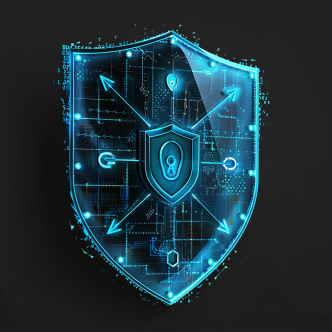The cybersecurity landscape is witnessing a phenomenon that has come to be known as the “Great Resignation” among Chief Information Security Officers (CISOs). The challenges faced by CISOs in coping with ever-increasing regulations, compliance mandates, and the need for skilled resources have reached a tipping point. Coupled with a lack of cooperation from the C-suite, these factors have led to a surge in burnout among CISOs.
We will examine how implementing automated system hardening can offer respite to CISOs and their teams, enabling them to navigate these challenges more effectively.
Navigating the complex terrain of regulatory compliance
The digital landscape is increasingly governed by a myriad of regulations and compliance mandates. CISOs are faced with the daunting task of keeping up with a constantly evolving regulatory environment. This not only requires significant time and effort but also demands specialized knowledge and resources that are often in short supply. The pressure to maintain compliance can be overwhelming, leading to exhaustion and frustration for CISOs who are burdened with the responsibility of ensuring adherence to a complex web of requirements.
Lack of work-life balance
CISOs are overwhelmed by the constant need to address urgent issues and unrealistic expectations placed upon them. A recent article by sdxcentral states that CISOs are dissatisfied with always putting out fires rather than "focusing on strategic issues."
Resource Constraints and Skills Gap
The demand for skilled cybersecurity professionals has skyrocketed in recent years, exacerbating an already existing skills gap. CISOs find themselves confronted with the challenges of acquiring and retaining talented individuals to support their security initiatives. Limited budgets, fierce competition for talent, and the need for continuous training further compound this issue. With the shortage of skilled resources, CISOs and their teams are left stretched thin, constantly juggling multiple responsibilities and struggling to keep pace with the evolving threat landscape.
Lack of Cooperation from the C-suite
In many organizations, the lack of cooperation and support from the C-suite presents a significant obstacle for CISOs. We've discussed this issue in our white paper 'How to Plan a Hardening Project' which touches on the conflicting agendas between Security and IT Teams and how collaboration between the two is crucial to the success of having a secure enterprise. Without the necessary understanding of the importance of cybersecurity, CISOs often face an uphill battle when trying to secure the resources, budget, and executive backing needed to effectively mitigate risks. The resulting frustration and disillusionment can erode the motivation and morale of CISOs, leading to burnout and ultimately, the decision to seek opportunities elsewhere.
Relieving Stress Through Automated System Hardening
Automated system hardening offers a ray of hope for CISOs who are grappling with these challenges. By implementing intelligent automation tools and frameworks, organizations can significantly reduce the burden on their security teams, allowing them to focus on critical tasks and strategic initiatives. Automated system hardening streamlines processes such as vulnerability scanning, reduces hardening costs, and ensures cyber resilience, enabling CISOs and their teams to proactively address security risks with greater efficiency and accuracy.
When it comes to exploring the possibilities of preventing cyber attacks and bolstering your organization’s security, reaching out to an organization that offers FREE DEMOS can be a valuable step. This enables you to make an informed decision about whether the product aligns with your organization’s specific needs and objectives. Additionally, they allow you to interact with experts who can address your questions and concerns, ensuring you have a comprehensive understanding of the product’s potential benefits and how it can contribute to your overall security strategy. Taking advantage of free demos is a proactive approach to staying ahead of the evolving threat landscape and empowering your organization to make informed decisions regarding its cybersecurity measures.
By embracing automation, organizations can empower their security professionals to navigate the complex cybersecurity landscape more effectively, allowing them to focus on strategic initiatives and bolster their defenses. The adoption of automated system hardening not only relieves the burden on CISOs but also positions organizations for long-term success in the face of ever-evolving threats and compliance requirements.




